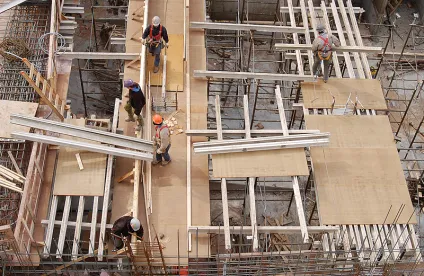For regional centers and project companies, jobs created through construction represent a path of least resistance for obtaining approval for I-924 applications, I-526 petitions and I-829 petitions by USCIS. The reason is two-fold: (1) projects usually meet or exceed the construction budget and the jobs are thereby deemed created at the I-829 stage; and (2) construction jobs are easy to prove from a documentary perspective because the regional center and the project company need only show through routine construction auditing that the qualifying hard and soft costs from construction have been spent. For both of these reasons, it is easy for the investor to prove, under a preponderance of the evidence standard, that the jobs have been created at the I-829 stage.
While construction jobs are usually the easiest jobs to prove at the I-829 stage, USCIS still scrutinizes the project company’s budget and construction timeline carefully. Here are five practice pointers that regional centers and project companies should observe when using construction jobs:
-
Economists separate construction jobs into two categories: direct and indirect construction jobs. Direct jobs represent those jobs on site during construction. USCIS has defined indirect jobs as those created in suppliers, transportation, engineering, and architectural services, maintenance and repair services, interior design services, and manufacturing of components and materials. The use of direct construction jobs usually substantially increases the amount of jobs created in the project, and so, many projects attempt to use them in the job creation count in addition to indirect construction jobs.
-
According to the June 17, 2009 USCIS Memorandum “EB-5 Entrepreneurs – Job Creation and Full Time Positions,” the EB-5 job count can include both direct and indirect construction jobs if the construction timeline is 24 months or longer. If the construction timeline is less than 24 months, only indirect construction jobs can be counted.
-
The construction timeline used to determine the 24+ month period for direct construction jobs commences when shovels are in the ground and continues through when the temporary certificate of occupancy is received. The timeline may be extended if the construction period includes continuous tenant improvements on site.
-
USCIS will want to see independent evidence that the construction timeline and the construction budget are reasonable for the size, scope and location of the project. All I-924 applications and I-526 petitions should include a 3rd party report that reviews the construction budget and timeline to show the project is within the normal range and that the timeline is not prolonged or inflated to pad the construction job creation number.
-
Depending on the project’s start date in relation to the I-526 filing dates, regional centers and project companies should be aware that a long construction timeline that maximizes construction jobs may also decrease the amount of qualifying operations jobs that can be counted in the project. USCIS requires the EB-5 petitioner to show that jobs will be created within 2 ½ years of I-526 approval. If construction is not slated to start until the EB-5 money is received, operations jobs may not be created within the relevant timeframe. This is especially true of the money remains in escrow until the I-526 petitions are approved.



 />i
/>i
